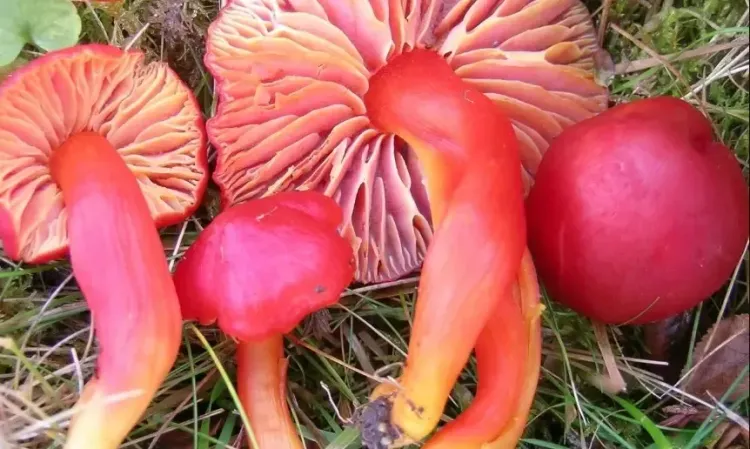First 1,300 Fungi Listed on IUCN Red List Highlight Intensifying Threats

Synopsis
Key Takeaways
- Over 1,000 fungi species are now on the IUCN Red List.
- Deforestation and urbanization are major threats to fungi.
- New assessments reveal the risk of extinction for many fungi.
- Conservation efforts are crucial for protecting these species.
- Fungi play a vital role in ecosystem health.
Gland (Switzerland), March 27 (NationPress) The number of fungi species on the IUCN Red List of Threatened Species has exceeded 1,000, indicating that deforestation, agricultural expansion, and urban development are significantly contributing to the worldwide decline of these species.
The latest update from Thursday also indicates that frankincense trees are facing an escalating risk of extinction, alongside new Green Status evaluations that demonstrate the effect of conservation efforts on various species, including the lion.
The IUCN Red List now catalogs 169,420 species, with 47,187 classified as threatened with extinction. The recent addition of 482 newly assessed fungi species raises their total on the IUCN Red List to 1,300, of which at least 411 are at risk of extinction.
“Fungi are the unsung heroes of life on earth, forming the essential foundation for healthy ecosystems -- yet they have long been overlooked. Thanks to the hard work of experts and citizen scientists, we have made a crucial advancement: over 1,000 of the world’s 155,000 known fungal species have been evaluated for the IUCN Red List of Threatened Species, the most comprehensive resource on extinction risk. Now, it’s time to translate this knowledge into action and protect the remarkable fungal kingdom, whose extensive underground networks support nature and life as we know it,” stated Dr. Grethel Aguilar, IUCN Director General.
The swift expansion of agricultural and urban landscapes has displaced fungal habitats, putting 279 species at risk of extinction.
Nitrogen and ammonia runoff from fertilizers and pollution from engines also endanger 91 species. These threats are particularly severe in Europe, affecting well-known species in traditional countryside settings, such as the vulnerable fibrous waxcap (Hygrocybe intermedia).
At least 198 species of fungi are threatened by deforestation for timber harvesting, illegal logging, and land clearance for agriculture. The clear-cutting of old-growth forests poses significant harm, destroying fungi that cannot re-establish themselves in managed forestry.
Since 1975, thirty percent of old-growth pine forests across Finland, Sweden, and Russia have been removed, endangering species such as the giant knight (Tricholoma colossus). Climate change is also affecting fungi.
More than 50 fungi species are at risk due to alterations in fire patterns in the US, which have dramatically transformed forests. Firs have taken over the high Sierra Nevada mountain woods since 1980, reducing habitats for the endangered Gastroboletus citrinobrunneus.
“Although fungi primarily exist hidden underground and within wood, their loss has repercussions for the life above ground that relies on them. As we lose fungi, we diminish the ecosystem services and resilience they offer, such as drought and pathogen resistance in crops and trees, as well as carbon storage in the soil,” noted Prof. Anders Dahlberg, Red List Authority Coordinator of the IUCN SSC Mushroom, Bracket and Puffball Specialist Group.
“It is crucial to safeguard more old-growth forests. Forestry practices should take fungi into account, such as preserving dead wood and dispersed trees, while proactive forest management can help control fire intensity.”
Fungi represent their own kingdom, separate from animals and plants. They are the second-largest kingdom after animals, with an estimated 2.5 million species, of which around 155,000 have been identified. They are fundamental to all ecosystems; most plants have partnerships with fungi to absorb nutrients and thus cannot survive without them, and they facilitate decomposition.
Many fungi are edible and play an essential role in food and beverage production, including fermentation, forming the basis of various medicines, and aiding in bioremediation efforts to cleanse contaminated sites.








